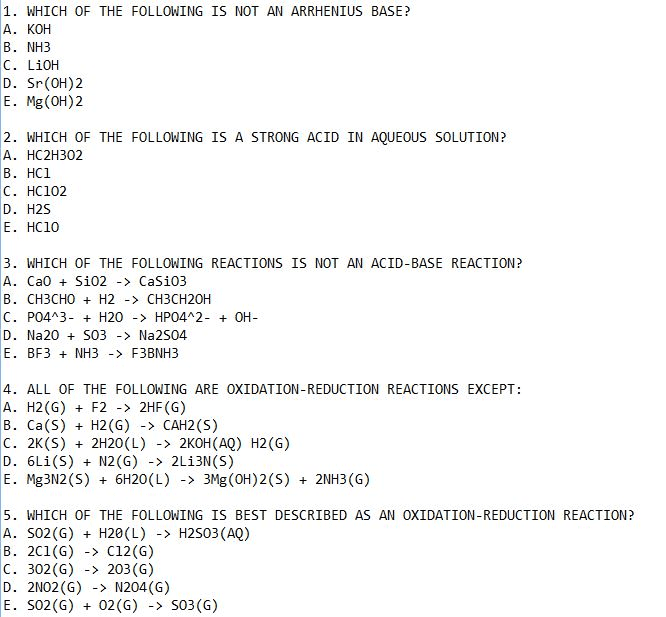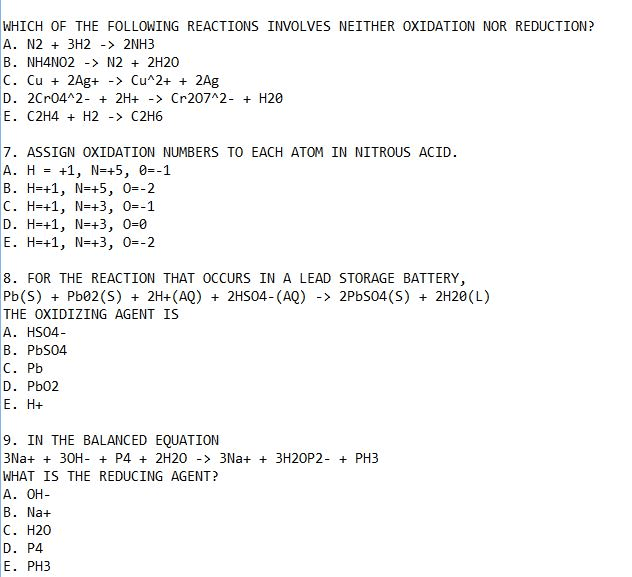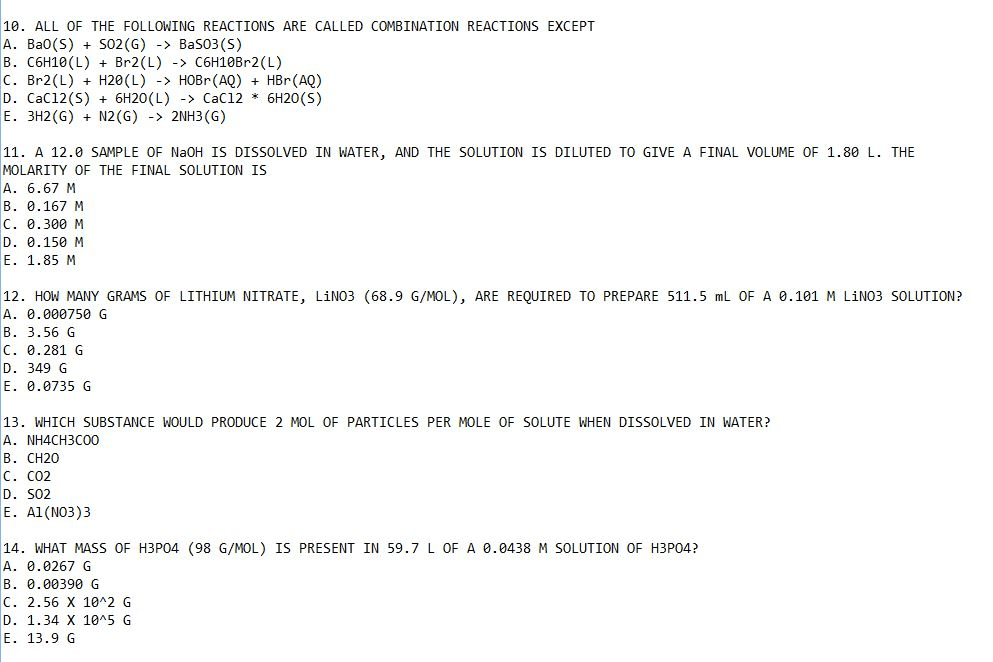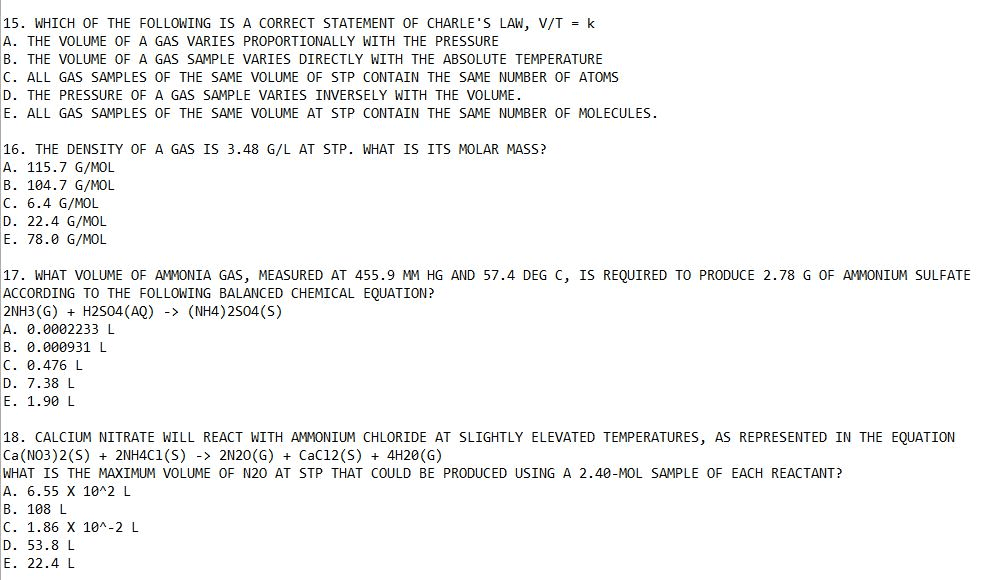1. The chemical equation for the synthesis, balanced only for the reactants, is as follows. Supply the coefficients for KCl and H2O required to balance the equation completely.
FeCl3·6H2O(aq) + 3K2C2O4·H2O(aq)
® K3Fe(C2O4)3·3H2O(s) + ____KCl(aq) + ____H2O(l)
Note that the reactants are used as their hydrates. FeCl3·6H2O means that one mol of the compound corresponds to one mol of FeCl3 and six mol of water. K2C2O4·H2O means that three mol of the compound corresponds to three mol K2C2O4 and three mol of water.
2. Calculate the amount (mols) corresponding to 5.00 g of FeCl3·6H2O (270.3 g/mol) and to 11.00 g of K2C2O4·H2O (184.2 g/mol). Note that the molar masses necessarily include the water of hydration.
3. On the basis of the chemical amounts calculated in no. 2 and the balanced chemical equation, determine the limiting reactant showing your calculations and telling why you chose that reactant.
4. Calculate the theoretical yield of the coordination compound (molar mass = 491.3 g/mol).
The product, like the reactants, is a hydrate. So the molar mass given is for the hydrate.
5. Calculate the percent yield based on an (assumed) actual yield of 7.52 g.
1. The chemical equation for the synthesis, balanced only for the reactants, is as follows. Supply the coefficients for KCl and H2O required to balance the equation completely.
FeCl3·6H2O(aq) + 3K2C2O4·H2O(aq)
® K3Fe(C2O4)3·3H2O(s) + ____KCl(aq) + ____H2O(l)
Note that the reactants are used as their hydrates. FeCl3·6H2O means that one mol of the compound corresponds to one mol of FeCl3 and six mol of water. K2C2O4·H2O means that three mol of the compound corresponds to three mol K2C2O4 and three mol of water.
2. Calculate the amount (mols) corresponding to 5.00 g of FeCl3·6H2O (270.3 g/mol) and to 11.00 g of K2C2O4·H2O (184.2 g/mol). Note that the molar masses necessarily include the water of hydration.
3. On the basis of the chemical amounts calculated in no. 2 and the balanced chemical equation, determine the limiting reactant showing your calculations and telling why you chose that reactant.
4. Calculate the theoretical yield of the coordination compound (molar mass = 491.3 g/mol).
The product, like the reactants, is a hydrate. So the molar mass given is for the hydrate.
5. Calculate the percent yield based on an (assumed) actual yield of 7.52 g.
For unlimited access to Homework Help, a Homework+ subscription is required.






